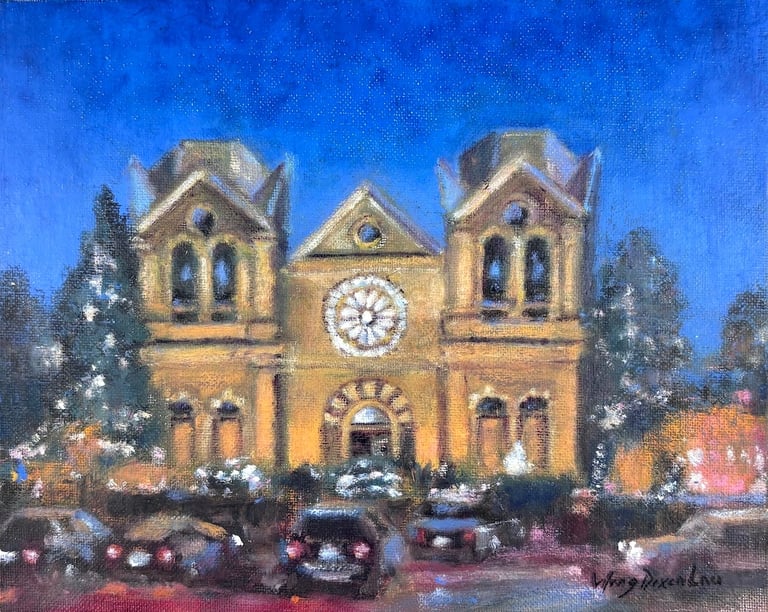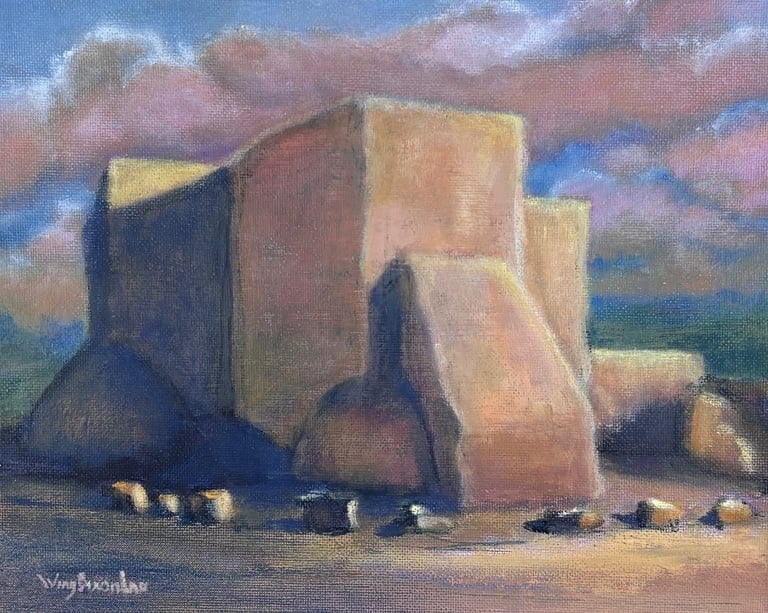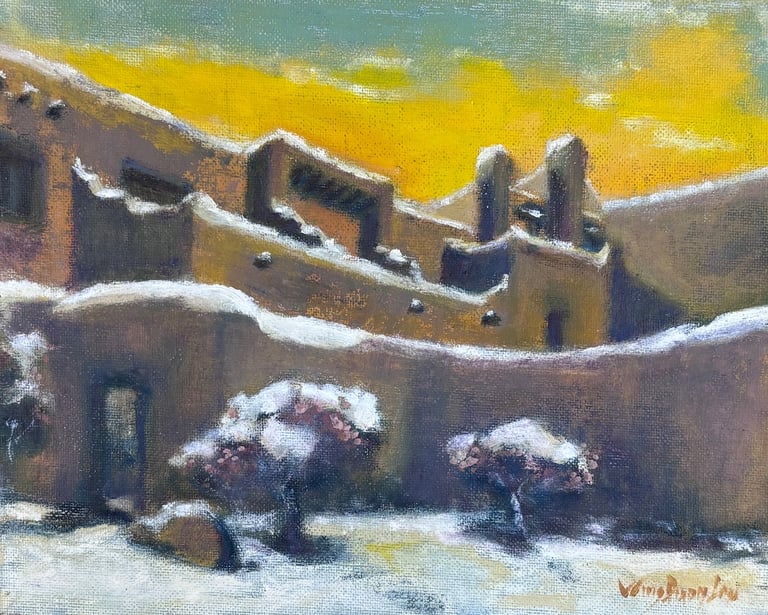What is beneath abstraction
If your abstract paintings are your feelings reflected by color fields, rhythm, lines, shapes and texture, you might be missing something important.
ABSTRACTIONTECHNIQUE
Landscape Painting – The Invisible Beneath Abstraction
For years now, I hear from critics that abstract painting is not about describing the visible world, but about translating the invisible pulse beneath it. Indeed, most abstract paintings I see are dominated by gesture, texture, rhythm, and color fields that speak not of what we see, but of what we feel.
For me, it requires the ability to observe and digest to crystalize what is beneath the abstraction before exercising the skills to reflect and express. To practice that philosophy, I found painting landscape helps me to observe and return to the foundational skills of drawing and painting.


"St. Francis Cathedral", oil, 8"x10"
Practicing representational landscape painting
By engaging with representational landscape of historical landmarks, I’m deepening and revisiting the structures and sensations that abstraction simplifies, distills, and transforms. Observing architecture is a study of forms, the tension between geometry and emotion, surface and texture.
At the same time, my abstract techniques flow back into my representational work. The expressive brushstrokes, layered surfaces, and sensitivity to color that characterize my abstraction find new expression in the landscapes.
Two Languages, One Inquiry
Some might worry that it could create dissonance in how collectors, critics, and followers perceive my “brand.” I understand that concern. The art world values coherence, often mistaking it for authenticity.
But authenticity, to me, lies not in repeating a single visual language, but in remaining faithful to one’s inquiry. My inquiry has always been about perception, emotion interacts with structure, how memory shapes vision. Whether that manifests as an abstract composition or a recognizable landmark, the core impulse remains the same.
These landscapes don’t contradict my abstraction; they contextualize it. They allow viewers to trace the lineage of my thought. The representational and the abstract are two sides of one continuous investigation.
Together, they form a single conversation about perception. It is about how we experience the world and how we transform that experience into visual poetry.
A Broader Artistic Voice
For my collectors, followers, and peers, this exploration offers a fuller view of my artistic voice. The representational works illuminate the roots of my abstract language, while the abstractions reveal the emotional resonance that lies beneath the surface of the seen world.
The ability to move fluidly between the two is not a contradiction. In fact, it’s proof of growth, mastery, and connection. It reflects a painter’s complete engagement with both seeing and feeling, structure and freedom, place and possibility.
So, when I paint a landscape, I am not stepping away from my practice as an abstract painter. I am tracing the same horizon by walking both sides of it. In every landmark I depict, there’s an echo of abstraction waiting to emerge; and in every abstract gesture I make, there’s a memory of the real. To paint both is to understand both genres more deeply.




"Ranchos de Taos", oil, 8"x10"
"New Mexico MOA", oil, 8"x10"
Location
Corrales, New Mexico USA 87048
